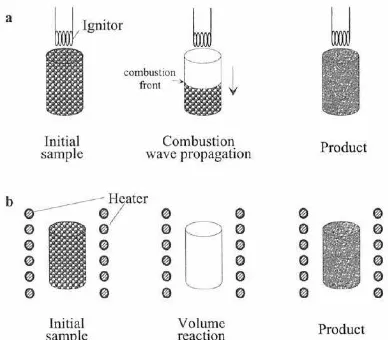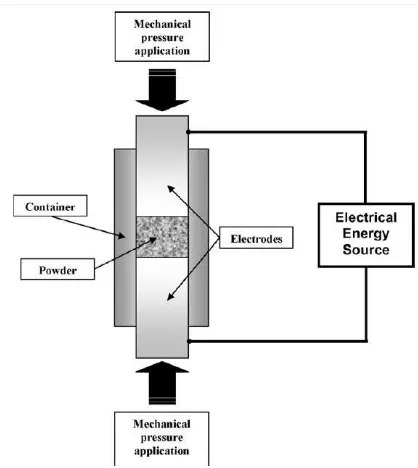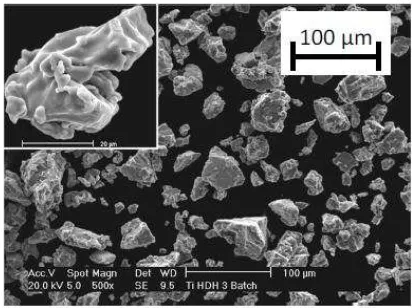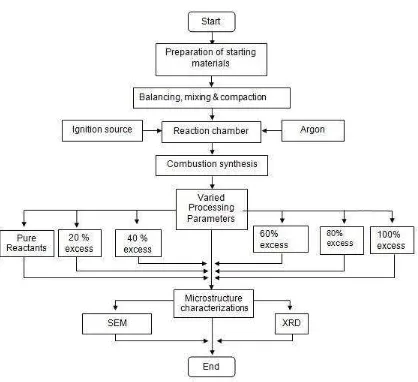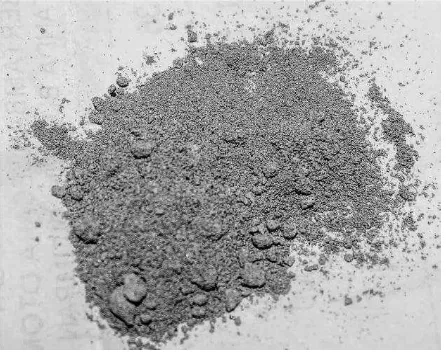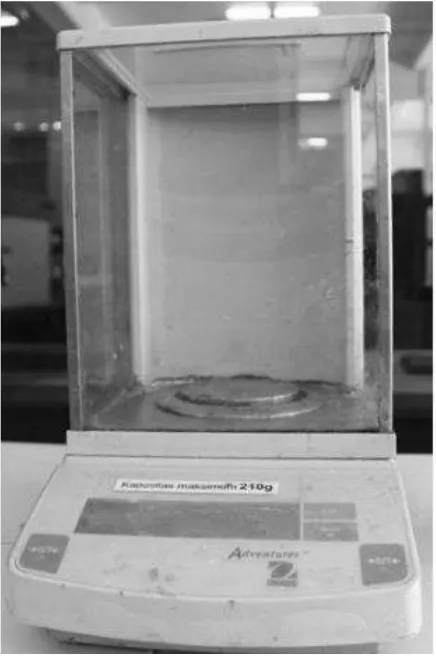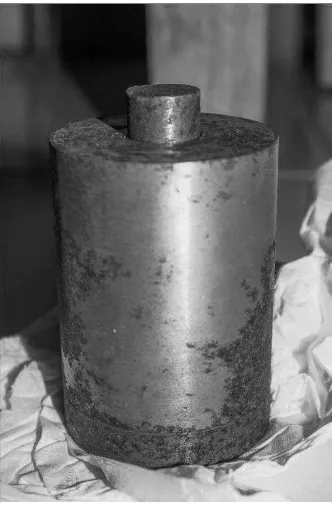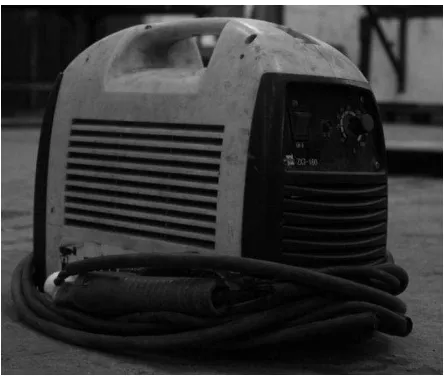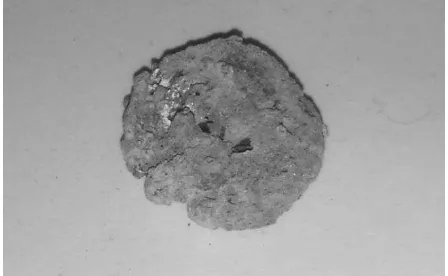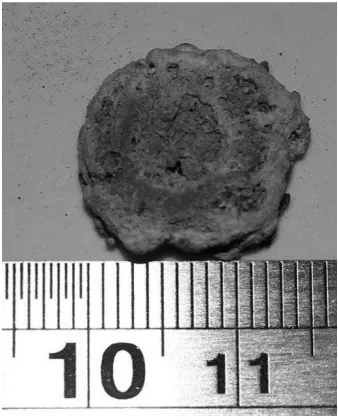PAPER PUBLICATION
THE EFFECT OF REACTANT COMPOSITIONS ON THE
MICROSTRUCTURE OF CERAMIC MATERIALS FORMED BY
COMBUSTION SYNTHESIS
RAMZUL IRHAM RIZA
D 200102010
MECHANICAL ENGINEERING DEPARTMENT
INTERNATIONAL PROGRAM
IN AUTOMOTIVE/MOTORCYCLE ENGINEERING
MUHAMMADIYAH UNIVERSITY OF SURAKARTA
APPROVAL
The
paper publication entitles"THE
EFFECToF
REAGTANT coMpoStTtONSON THE
MICROSTRUCTUREOF
CERAMIC MATERIALS FORMED
BY COMBUSTIONSYNTHESIS",
has
been
approved
by
supervisor
andauthorized
by
Director
of
lnternational Program
as
partial fulfillment
of the
requirementsfor
gettingthe
Bachelor Degree
of
Engineering in
Automotive Department of Muhammadiyah University of Surakarta.Written by:
Name
:Ramzul lrham
RizaNIM
: D20MA2M0
Has Approved and legalized on:
Day
:3"t1'rn.lrrj
Date
:
\?
Dec,E*tber
2o\4
(Dr.
Tri Widodo Besar Riyadi)
(Wijianto,ST,M.Eng.Sc)
Admitted by,
THE EFFECT OF REACTANT COMPOSITIONS ON THE MICROSTRUCTURE OF CERAMIC MATERIALS FORMED BY COMBUSTION SYNTHESIS
Ramzul Irham Riza
Mechanical Engineering Department
Universitas Muhammadiyah Surakarta
Jl. Ahmad Yani Tromol Pos I Pabelan Kartasura Surakarta 57102
Email: [email protected]
ABSTRACT
Ceramics have been attractive as advance materials for high temperature applications due to their advantages such as high modulus, high hardness, high melting temperature, and high corrosion resistance. Of a broad range of ceramics, titanium carbide and aluminide have developed into one of the most interesting ceramics since they have high strength and good wear resistance at elevated ceramic materials. Producing TiC-Al2O3 from economical material (TiO2) is less expensive than that from their elemental powders. The combustion synthesis (CS) process offers significant advantages to fabricate TiC-Al2O3 since it produces high exothermic reaction and takes a short processing time. The objective of this study was to explore the combustion synthesis of TiC-Al2O3 and investigate the effect of reactant compositions on the combustion process and microstructure of synthesized products. The combustion synthesis was carried out in a combustion chamber with an atmospheric condition. The ignition technique to initiate the CS was performed using an arc flame. The microstructure and mechanical properties of synthesized products were observed. The result of this research would benefit for producing a high performance ceramic material obtained from economical material with an efficient process.
1
INTRODUCTION
Background of the Study
There has been a lot of interest in ceramic materials such as TiC, TiB2, WC, SiC, and Al2O3 as hard protective coatings in a wide range of industrial applications since they have high hardness and high wear resistance (B. Huang, L. D. Chen, and S. Q. Bai,, 2006)(B. G. Kim, Y. Choi, J. W. Lee, Y. W. Lee, and G. M. Kim, 2000)(D. Vallauri and I. C , 2008)(M. Razavi, M. Reza, and R. Mansoori, 2008). Of these materials, titanium carbide has developed into the most interesting ceramic for high temperature application due to its high modulus, high hardness, high melting temperature, and high corrosion resistance(D. Vallauri and I. C , 2008). However, the application of single phase ceramic in high temperature is limited due to its poor fracture toughness. Therefore, the TiC particle has been widely investigated as a candidate for use in the reinforcing phase for various composite materials such as metallic matrix composite(S. C. Tjong and Z. Y. Ma, 2000), intermetallic matrix composite, and ceramic matrix composite(C. L. Yeh and Y. L. Chen, 2008).
Alumina ceramic systems such as TiC–Al2O3 have also been widely found in high
temperature applications since they have high hardness and low density. It was also reported that the binary ceramic composites of TiC–Al2O3 could improve the fracture toughness of the
individual ceramic materials, either TiC or Al2O3. Further investigations have showed that ternary
ceramic composites exhibited higher fracture toughness than those of binary ceramic composites. The addition of 10 % ZrO2 into Al2O3–TiC prepared from TiO2, Al, and C using
combustion synthesis and followed by hot pressing was able to increase the fracture toughness of Al2O3–TiC–10 wt.% ZrO2 by approximately 20% more than that of Al2O3–TiC composite(Q.
Dong, Q. Tang, and W. Li, 2008).
Objectives of the Study
Based on the background and statement of the problem in this final project, the object of this research is as followed:
2
Problem Limitations
To avoid problem expaditure is needed some of problem limitations so that it can be more understable by focusing on those problem. Those problems are:
3
REVIEW OF LITERATURE
Literature Study
There are some literatures as the references of this research. Those are the
researches about ceramic material and combustion synthesis.
Titanium carbide has developed into the most interesting ceramic for high temperature application due to its high modulus, high hardness, high melting temperature, and high corrosion resistance ( D.Vallauri and I.C ,2008)Ceramic processing generally involves high temperatures, and the resulting materials are heat resistant or refractory (J. J. Moore and H. J. Feng,1995 )
The work part after compaction is called a green compact or simply a green, the word green meaning not yet fully processed (Arvind Varma, Alexander S. Rogachev', Alexander S. Mukasyan,1998 )
The reactant is visualized as being composed of a large number of highly dense,spherical grains(S Das, A K Mukhophadiyay, S Datta and D Basu, 2009 )
4
FUNDAMENTAL THEORY
Ceramics
Ceramics are defined as a class of inorganic, nonmetallic solids that are subjected to high temperature in manufacture and/or use. The most common ceramics are composed of oxides, carbides, and nitrides. Silicides, borides, phosphides, tellurides, and selenides also are used to produce ceramics. Ceramic processing generally involves high temperatures, and the resulting materials are heat resistant or refractory.
Ceramics are usually made by heating natural clays at a high temperature. Typically, clays for ceramics are grouped into two general types: red clay, which contains primarily silicon dioxide and iron oxide; and kaolin clay, which contains mostly aluminum oxide and almost no iron oxide. Because red clay contains more iron, it often has a rusty brown shade somewhere between light tan and dark brown, while pure kaolin clay is white.
Combustion Synthesis
Combustion syntesis is a process to synthesize materials which use highly exothermic chemical reactions between metals and non metals, the metathetical (exchange) reaction between reactive compounds or reactions involves compounds/mixtures.
There are two kinds of combustion synthesis,namely Self-Ppropagating High Temperature Synthesis (SHS) and Volume Combustion Synthesis (VCS). In both cases, reactants may be pressed into a pellet, typically cylindrical in shape. The samples are then heated by an external source (e.g., tungsten coil, laser) either locally (SHS) or uniformly (VCS)
5
Figure 1 a) SHS Ilustrations b) VCS Ilustrations
Ignition Techniques
6
Figure 2 ECAS Scheme
Green Mixture Density
Mixtured powder material are pressed in dies under high pressure to form them into the required shape. The work part after compaction is called a green compact or simply a green, the word green meaning not yet fully processed(Marinov).
As a result of compaction, the density of the part, called the green density is much greater than the starting material density, but is not uniform in the green(Marinov)
Reactant gas undergoes mass transfer from the bulk gas stream to the pellet surface. From the surface the gas must diffuse to arrive at a sharp interface between the grain particle and the product layer for reaction to take place(Li, 2003).
Grain Size of Powder
7
and higher surface charge (zeta potential) will typically improve suspension and emulsion stability.
8
METHODOLOGY OF PROJECT
Flow Chart of Project
9
Material
The powders were used in this work are aluminium (Al), titanium oxide (TiO2), carbon black (C) and alumina (Al2O3).
Figure 5. TiO2 Powder
10
Figure 7. C Powder
Tools
1. Ohaus Advanturer Balance
11
2. Torque Wrench
Figure 9. Torque Wrench
3. Dies and Punch
12
4. Arch Welding Inverter
13
RESULT and DISCUSSION
.
1. Synthesized Product
Pure material is a sample material composed of TiO2, Al, C with ratio of 3 : 4 : 3, without any excess. After the sample is ignited using arch flame, we can observe the flame propagation on its sample is very quick among all of sample. When material begins to react, its flashing can be seen clearly.
Figure 12. Synthesized Product without Excess Addition
14
Figure13. Synthesized Product with 20% Excess addtion
The mass of the sample is 1.288 gram or the sample with 40 % excess of TiO2 and C. In this excess the flame propagation is starting slow when combusting process was conducted. Flashing is appeared which means that material begins to react.
15
In 60 % Excess of TIO2 and C, it has slower flame propagation than before experiments and there is flashing when the material start to react. The results of this experiment is solid material can not be formed well because at half side of its material still in powder apperances.
Figure 55. Syntheesized Product with 60 % Excess
16
Figure 66. Synthesized Product with 80 % Excess
Total mass material in this sample is 1.719 gram or 100% excess of TiO2 and C. At this section the material cannot fine react during combustion process. The flame propagation does not exist.
17
2. XRD Pattern
XRD pure material result is a result of XRD in pure sample material without any excess addition of stoichiometric compositions.
The XRD pattern of pure material describes that there is only two TiC detected by XRD testing which is at approximately 45 in theta with 5 in intensity or counts and 80 in theta with 8 in counts. Meanwhile, Al2O3 are detected as 6 points, namely at 31,37, 39, 45, 60, and 85 in 2 theta.
Figure 88. XRD Pattern without Excess
18
19
This is last sample which is tested by XRD,40 % excess of TiO2 and C. Basically,for the 3rd experimental,it has almost same theta with the 2nd experiment but it has additional TiC detected at 60 and 78 in 2 theta.
Figure 20. XRD Pattern With 40% Excess
3. Microsructures
20
21
22
23
CONCLUSION AND SUGGESTIONS
Conclusions
Based on analysis and discussion above, there are some conclusions which can be drawn as follows:
a. The production of ceramic material using combustion synthesis was succesful. The effect of reactant composition has influenced the ignition and flame propagation.
b. The phase composition of the synthesized product can be detected using SEM and XRD. Al2O3 can be clealry seen from the XRD pattern. However, XRD spectra of titanium caribide (TiC) as one of product from combustion process does not appear. The effect of reactant composition on the microstructure of the synthesized product can be observed from the porosity of the reacted product, in which the increasing content of TiO2 and C resulted in the increase of porosity. The increasing content of TiO2 and C can also be identifued from the XRD pattern. The more excess addition the higher peak result on XRD test.
Suggestions
From the experiment that has been done by researcher, there are several things that need to be understood well in combustion process research,they are :
a.
TiC cannot be observed in the reacted product. This is due to small size of TiC itself.b.
Combution process should be done in inside of a box to minimalize contact with oxygenc.
Balancing process should be done carefully by using mask because the powder grain is24
REFERENCES
1. Bulk ultrafine binderless WC prepared by spark plasma sintering. B. Huang, L. D. Chen, and S. Q. Bai,.
2006, Scripta Materialia, Vol. 54, pp. 441–445.
2. Characterization of a silicon carbide thin layer prepared by a self-propagating high temperature synthesis reaction. B. G. Kim, Y. Choi, J. W. Lee, Y. W. Lee, and G. M. Kim. 2000, Thin Solid Films, pp. 82–86.
3. TiC–TiB2 composites: A review of phase relationships, processing and properties. D. Vallauri and I. C .
2008, Journal of the European Ceramic Society, Vol. 28, pp. 1697–1713.
4. Synthesis of TiC–Al2O3 nanocomposite powder from impure Ti chips, Al and carbon black by
mechanical alloying , . M. Razavi, M. Reza, and R. Mansoori. 2008, Journal of Alloys and Compounds, Vol. 450, pp. 463–467.
5. Microstructural and mechanical characteristics of in situ metal matrix composites . S. C. Tjong and Z. Y. Ma. July 2000, Materials Science and Engineering, Vol. 29, pp. 49–113.
6. Combustion synthesis of TiC–TiB2 composites. C. L. Yeh and Y. L. Chen. August 2008, Journal of Alloys and Compounds, Vol. 463, pp. 373–377.
7. TiC–NiAl composites obtained by SHS: a time-resolved XRD study. M. A. C. Curfs, I.G. Cano, G.B.M. Vaughan, X. Turrillas, A. Kvick, Rodrıgues. 2002, Journal of the European Ceramic Society, Vol. 22, pp. 1039–1044.
8. Synthesis of NiAl–TiC nanocomposite by mechanical alloying elemental powders. L. Z. Zhou, J. T. Guo, and G. J. Fan. 1–2, Jun 1998, Materials Science and Engineering: A, Vol. 249, pp. 103–108.
9. Combustion synthesis of TiC–NiAl composite by induction heating. X. Zhu, T. Zhang, D. Marchant, and V. Morris. 13, Oct 2010, Journal of the European Ceramic Society, Vol. 30, pp. 2781–2790.
10. Al2O3–TiC–ZrO2 nanocomposites fabricated by combustion synthesis followed by hot pressing. Q. Dong, Q. Tang, and W. Li. 1–2, Feb 2008, Materials Science and Engineering: A, Vol. 475, pp. 68–75.
11. Co ustio Pro esses That Sy thesize Materials,” , vol. , o., pp. , . Merzhanov, A. G. s.l. : Elsevier,
1996, Journal of Materials Processing technology, Vol. 56, pp. 222–243.
12. Combustion synthesis of advanced materials: Part I. Reaction parameters . J. J. Moore and H. J. Feng.
25 13. Kirk-Othmer Encyclopedia Of Chemical Technology. 4th edition. s.l. : John Wiley & Sons. Vol. Volume
5.
14. 1987 Census Of Manufactures. Washington, D.C : U. S. Department of Commerce, May 1990.
15. Ull a ’s E y lopedia Of I dustrial Che istry. 5th Edition. Vol. A6.
16.COMBUSTION SYNTHESIS OF ADVANCED MATERIALS:PRINCIPLES AND APPLICATIONS. s.l. Arvind Varma, Alexander S. Rogachev', Alexander S. Mukasyan : Department of Chemical Engineering University of Notre Dame.
17. Prospects of microwave processing: An overview. S DAS*, A K MUKHOPADHYAY, S DATTA and D BASU. 1, Kolkata : Central Glass and Ceramic Research Institute, February 2009, Vol. 32.
18. Consolidation/synthesis of materials by electric current activated/assisted. Roberto Orru` a,b, Roberta Licheri , Antonio Mario Locci , Alberto Cincotti , Giacomo Cao. Materials Science and Engineering R.
19. Powder Metallurgy. Marinov, Valery. Manufacturing Technology.
20. The numerical simulation of the heterogeneous composition effect on the combustion synthesis of TiB2 compound. Li, H.P. Hsintien : Elsevier Science Ltd, 2003.
21. Processing of Elemental Titanium by Powder Metallurgy Techniques. L. Bolzoni, E.M. Ruiz-Navas and E. Gordo. Switzerland : Trans Tech Publications, 2013, Materials Science Forum, Vol. 765.
22. An introduction to powder metallurgy. F. Tummler and R. Oberacker. 1993, London: Institute of Materials.
23. Combustion synthesis of metal-matrix composites: Part I, teh Ti-TiC-Al203 system. J. J. M. A.O. Kunrath, T.R. Strhaecher. 2, 1996, Scripta Materialia, Vol. 34, pp. 175–181.
24. Combustion synthesis of fine AlN powder and its reaction control. T. Sakurai, O. Yamada, and Y. Miyamoto. 1–2, Jan 2006, Materials Science and Engineering: A, Vol. 416, pp. 40–44.
25. EFFECT OF MECHANICAL MILLING AND CURRENT INTENSITY ON. Mehra, Praktik D. San Diego : s.n., 2013.
